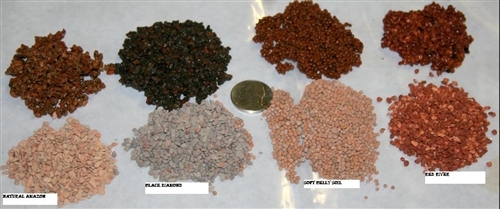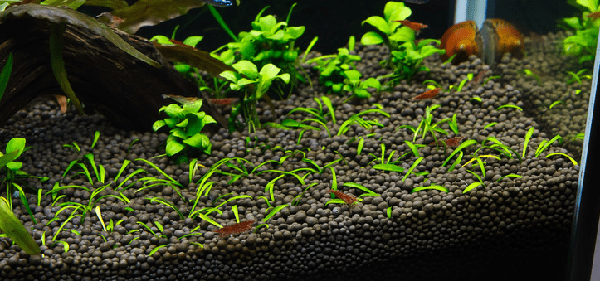Substrate is defined as the stuff you use as the foundation of your tank. The color, how it reacts with your water, and even the particle sizes have an impact on the health of your fish, the visual foundation of your tank, as well as the health of your other aquatic plants and creatures. I’ve explained aquarium substrate in detail in my previous post – Understanding Aquarium Substrate.
In this post however, I’m going to share some tips on choosing the best planted tank substrate and what are some of the important things you need to consider.
Table of Contents
Best Planted Tank Substrate
Let’s Add Some Color

Substrate colors can range from natural ones to shocking neon colors to dark colors. The choice is entirely up to you, depending on what you prefer, what will compliment your fish, and the theme of your aquarium. Just a quick reminder: whatever color you choose, it will have an effect on the color of your fish, so choose wisely. Lighter substrate will work wonders for darker colored fish and darker substrate will do some color enhancing for lighter colored fish.
Water Reaction
Different fish require different water levels and temperatures. It is important to know that the substrate you add to your tank can lower or rise the pH levels of your tank. So before you make any decision, do some research about a particular substrate and read the label especially about its reaction with water.
Particle Sizes that Do Matter

Substrate particles can come in a variety of sizes, from sand grains to large rocks. Take note of what kind of fish and plants you are interested in and do research on their behavior and natural living environment; choose which substrate would be the most appropriate according to your findings.
Another fun fact about substrate is that smaller particle substrate can clog together and lead to a lack of oxygen in your tank so you need to keep it filtered and use other methods to keep in oxygen. A larger substrate particle needs to be cleaned much more regularly as food and waste can get stuck between them and poison your fish.
Planted Tank Substrate Choices
The substrate you plant in your aquarium needs to be carefully selected. Think about what you need your tank to represent. Should your substrate be penetrable? Will it provide enough nutrition for the living aquatic creatures to survive? Will it provide enough support for your plants and other objects you would want to add to the tank?
Fluorite and laterite are clay based substrate and are not usually recommended for plants with roots that will break easily. Fluorite is high in iron, while laterite stores nutrients. There are many different types of aqua-soil available; they are a good substrate when it comes to filtering and the circulation of oxygen in a tank.
An eco-complete substrate such as the CaribSea Eco-Complete Substrate is also a great natural looking substrate to use in planted aquariums. It also lasts long and contains all the nutrients plants and your aquatic creatures require for thriving and growing.
If your option is to save money with substrate, you can always go with sand as it is a natural substrate and can also blend in well with other substrates or potting soil, but it may cause filtration problems. One aspect some people do not know is that you can add up to four levels of planted aquarium substrate if you want.
Let’s Do This!

When we look at all the choices, clearly you have a lot of interesting options when it comes to the type of substrate you should use in your tank. The end decision is entirely up to you. Be mindful of the color, size, and even the type of fish and plants that will benefit from the type of substrate you chose. Always put the fish and their health and safety first when buying substrate for your planted fish tank.
Substrate is not only your foundation for your planted fish tank, but also part of your own theme, aquatic creatures, and living plants. Choosing the correct substrate is very important for everything to be synchronized and harmonious with the rest of the tank.
The Signs of Poor Substrate In A Planted Aquarium
